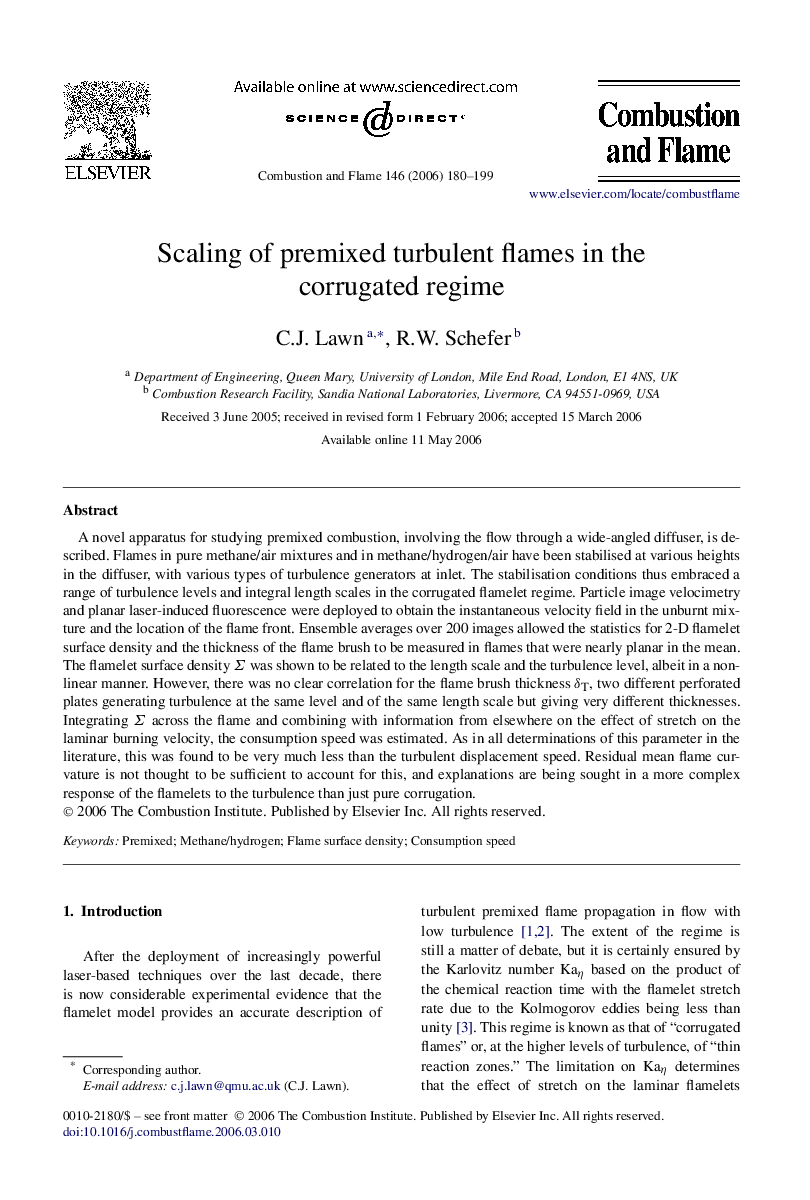| Article ID | Journal | Published Year | Pages | File Type |
|---|---|---|---|---|
| 169913 | Combustion and Flame | 2006 | 20 Pages |
A novel apparatus for studying premixed combustion, involving the flow through a wide-angled diffuser, is described. Flames in pure methane/air mixtures and in methane/hydrogen/air have been stabilised at various heights in the diffuser, with various types of turbulence generators at inlet. The stabilisation conditions thus embraced a range of turbulence levels and integral length scales in the corrugated flamelet regime. Particle image velocimetry and planar laser-induced fluorescence were deployed to obtain the instantaneous velocity field in the unburnt mixture and the location of the flame front. Ensemble averages over 200 images allowed the statistics for 2-D flamelet surface density and the thickness of the flame brush to be measured in flames that were nearly planar in the mean. The flamelet surface density Σ was shown to be related to the length scale and the turbulence level, albeit in a nonlinear manner. However, there was no clear correlation for the flame brush thickness δTδT, two different perforated plates generating turbulence at the same level and of the same length scale but giving very different thicknesses. Integrating Σ across the flame and combining with information from elsewhere on the effect of stretch on the laminar burning velocity, the consumption speed was estimated. As in all determinations of this parameter in the literature, this was found to be very much less than the turbulent displacement speed. Residual mean flame curvature is not thought to be sufficient to account for this, and explanations are being sought in a more complex response of the flamelets to the turbulence than just pure corrugation.
